In 2022, around eight and a half million tourists visited the Dominican Republic, making it the most visited country in the Caribbean, and the fifth most visited place in the Americas.
But is the Dominican Republic as safe as it is popular? The short answer to this question is both yes and no. This is because while travel advisories consider the country only moderately safe, you’ll likely have an incident-free vacation as long as you remain cautious. Now let’s get into some details regarding the safety conditions of this beautiful Caribbean country.
Are you planning a last minute trip to Dominican Republic? We’ve put together all the resources you’ll need for a fun & safe travel:
🛌 Best & Safest Places to Stay in Dominican Republic:
👉 Hacienda Samana Bay Hotel – Family rooms, Restaurant, Airport shuttle
👉 Hodelpa Gran Almirante – Free WiFi, Bar, Outdoor swimming pool
👉 Sublime Samana – Spa and wellness centre, 3 restaurants, 2 swimming pools
👉 Senator Puerto Plata – Fitness centre, Free WiFi, Bar
⛱️ Fun Activities & Tours in Dominican Republic:
👉 Adventure Bundle: Monkeyland, Ziplines & Buggies Punta Cana
👉 Small-Group Cruising and Snorkeling Catamaran Tour
👉 Full Safari Zipline, Buggies & Horse Riding
🚗 Best & Safest Dominican Republic Transportation Services:
👉 Airport Pickup Service – Welcome Pickups
👉 Rent a Car – DiscoverCars
🙏 Stay Safe While Travelling:
👉 Safetywing (for medical insurance)
👉 VisitorsCoverage (for trip insurance)
Is the Dominican Republic Safe?
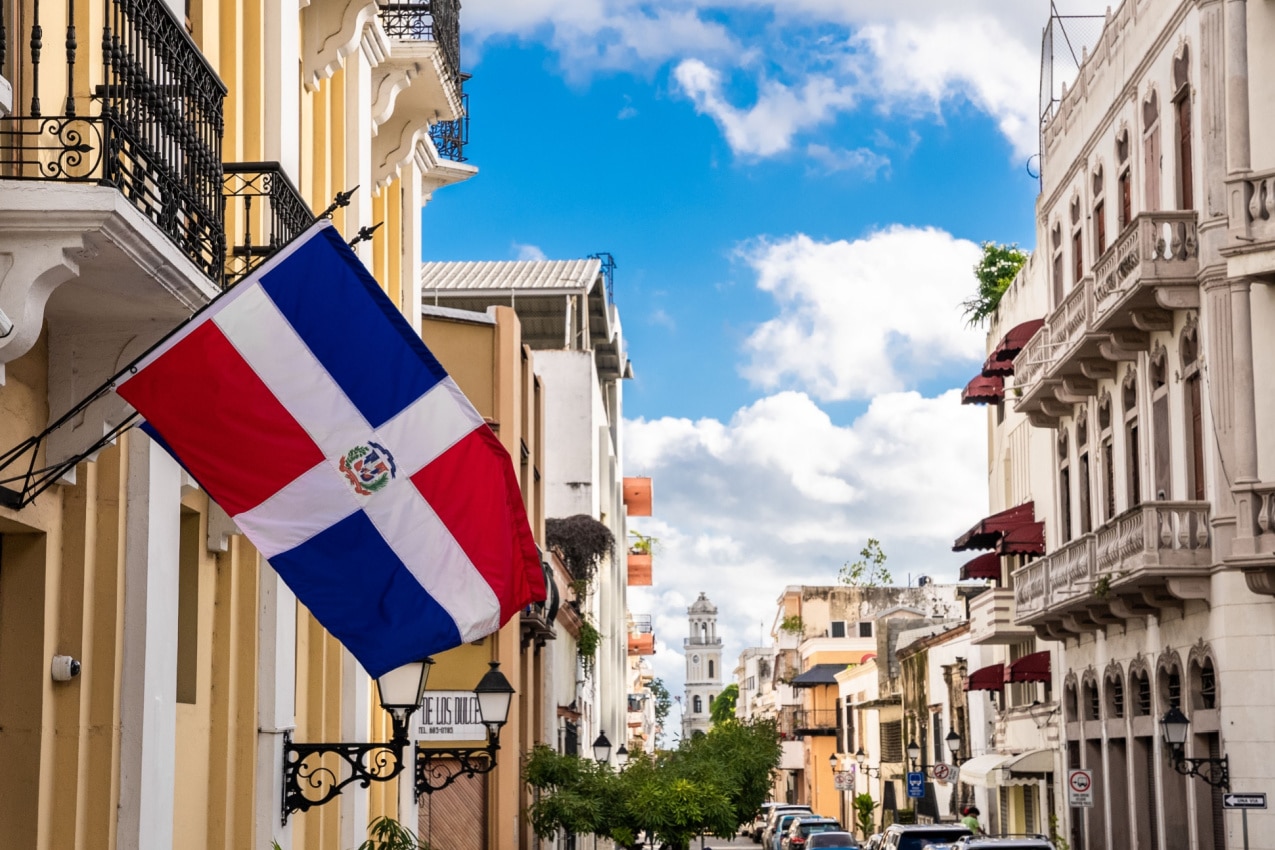
The UK travel advisory gives a well-balanced answer to this question:
“The Dominican Republic is friendly and welcoming and the vast majority of visits to the country are trouble-free. However, there is a high crime rate, ranging from opportunistic crime like bag snatching and pickpocketing to violent crime.”
Here’s a rough outlook of the country’s safety conditions:
- Travel advisory: All travel advisories consider the Dominican Republic a moderately safe location.
- Crime rate: Crime in the Dominican Republic is very high (71.34) — the main problem areas are theft, violent crime, scams, and the harassment of women.
- Dangerous areas: Stay away from La Duarte, Arroyo Hondo, Naco, Gazcue, Cristo Rey, Villa Agrícola, and Los Guandules.
- Police presence: There’s a special police force for tourists called politur.
- Natural Disasters: The Dominican Republic faces a moderate risk of hurricanes, earthquakes, and tsunamis.
- Public transport: The public buses are unsafe, but taxi companies are both safe and reliable.
- Medical care quality: It’s decent in the larger cities, but drops in quality as soon as you move toward the rural areas.
Travel Advisory for Dominican Republic
According to the US travel advisory, the Dominican Republic is classified in the level-2 safety category. That means you should exercise increased caution due to the high crime rate.
The US travel advisory ranks every country in four different categories, according to their safety level:
- Level 1: Exercise Normal Precautions
- Level 2: Exercise Increased Caution
- Level 3: Reconsider Travel
- Level 4: Do Not Travel
The other travel advisories, including the Canadian and the Australian ones, are on the same page. They cite the country’s high crime rate as the main cause for concern.
The most common crimes affecting tourists in the Dominican Republic are:
- Petty theft, including pickpocketing and bag snatching
- Assault and violent crime
- Scams and frauds
- Verbal harassment and abuse of women, including spiked food and drinks
A Comprehensive Look at Dominican Republic Crime Rates
Numbeo gives the Dominican Republic a crime rating of 71.34, which is considered a high crime index. Additionally, nearly all the individual categories for different types of crime are also either rated as very high, high, or moderate.
You can see the various scores in the table below. The data is shared by 361 contributors.
| Crime Rates in the Dominican Republic | December 2023 (Last Update) |
| Level of crime | 71.34 |
| Rate of crime increase in the past 3 years | 72.41 |
| People with using or dealing drugs | 60.69 |
| Property crimes such as vandalism and theft | 66.19 |
| Violent crimes such as assault and armed robbery | 70.30 |
| Corruption and bribery | 81.43 |
| Safety walking alone during daylight | 55.73 |
| Safety walking alone during night | 27.11 |
The Canadian travel advisory gives the best summary of the crime situation in the Dominican Republic: “Crime occurs in the Dominican Republic, including violent crime, especially in major cities. However, most incidents are opportunistic crimes which are the most significant threat for tourists.”
However, scams, frauds, and the harassment of women are also common.
Petty Theft
Petty theft happens all over the country, and it’s usually on the rise during the holiday season, when the country is packed with tourists. Petty theft is particularly frequent at:
- Resorts
- Beaches
- Airports
- Bus stations
- Public transportation
- Airport terminals
Drive-by robberies and theft are also common in the Dominican Republic. Thieves on motorcycles or scooters drive beside unassuming tourists and snatch their bags or other belongings. They may even reach into a vehicle while waiting at a red light in traffic.
Violent Crime and Assaults
According to the Canadian travel advisory:
“Violent crime against foreigners, including assault, occasionally occurs. Incidents take place mainly in large cities, at night or early morning. Some have been targeted in armed robberies when traveling to the Las Américas International Airport, sometimes in taxis.”
Most violent crimes are connected to organized crime rings and gangs, like the infamous Latin Kings. Gang-related violent crimes usually occur in poorer and more dangerous neighborhoods, but there have been cases of violent attacks affecting tourists, as well.
Anyhow, you should stay away from dangerous neighborhoods, since you’re much more likely to get attacked there. The most famous hotspots for crime in the country are:
- La Duarte
- Arroyo Hondo
- Naco
- Gazcue
- Cristo Rey
- Villa Agricola
- Los Guandules
Scam and Fraud
Scam and fraud are a constant threat in the Dominican Republic. Beware of:
- Criminals posing as policemen and fining tourists for made-up crimes.
- Rogue lawyers who operate near police stations and often target desperate tourists who have real problems.
- Credit card and ATM scams like cloning.
- Dating app scams and fraud that usually result in the victim getting isolated and robbed.
Verbal Harassment and Abuse of Women
According to the Australian travel advisory women are particularly at risk of harassment and assault.
The most common strategy of the perpetrators is spiking the food or drinks of victims with drugs. The drugs may be inside alcoholic or non-alcoholic drinks, snacks, chewing gum, or even cigarettes. Bars and other places of entertainment are their common territory.
Finally, dating apps also pose a danger. According to the US travel advisory:
“Several U.S. citizen travelers in the Dominican Republic have reported that they were robbed by people they met through popular online dating applications. If meeting with strangers, you should strongly consider meeting only in public places and avoiding isolated locations where crimes are most likely to occur.”
Police Presence in Dominican Republic
The Dominican Republic is protected by the Dominican National Police (Spanish: Policía Nacional Dominicana). They have nearly 32,000 officers for a population of almost nine million.
However, the Dominican police force isn’t considered to be reliable. Amongst other things, they are infamous for corruption and violent behavior, a hot topic in the media, particularly given suspicions that the police force is involved in illegal trafficking rings.
Luckily for visitors to the Dominican Republic, the country has an alternative police force that’s specifically created to protect tourists. That force is called Politur, and they’re scattered throughout the country, especially near tourist hotspots. You can easily recognize them by their uniform: white shirt and blue bermudas. They usually drive motorcycles.
Politur is highly regarded in the Dominican Republic and it’s a significant factor in maintaining its tourism industry. Recently, they received a $2 million boost and 65 new vehicles in the form of pickup trucks and motorcycles.
How to Stay Safe in the Dominican Republic
- If someone tries to rob you, hand over your personal belongings without resisting.
- Do not carry or wear valuable items that will attract attention.
- Contact the police or the hotel management if the resort or hotel staff demonstrate unwanted attention.
- Avoid secluded places, even at your resort/hotel.
- Don’t leave drinks or food unattended.
- Don’t use dating apps.
- Be careful around ATMs.
- Always ask police officers to legitimize themselves.
- Don’t use public buses.
- Stay away from dangerous areas.
- Avoid exploring the larger cities at night.
Is It Safe to Travel Solo in the Dominican Republic?
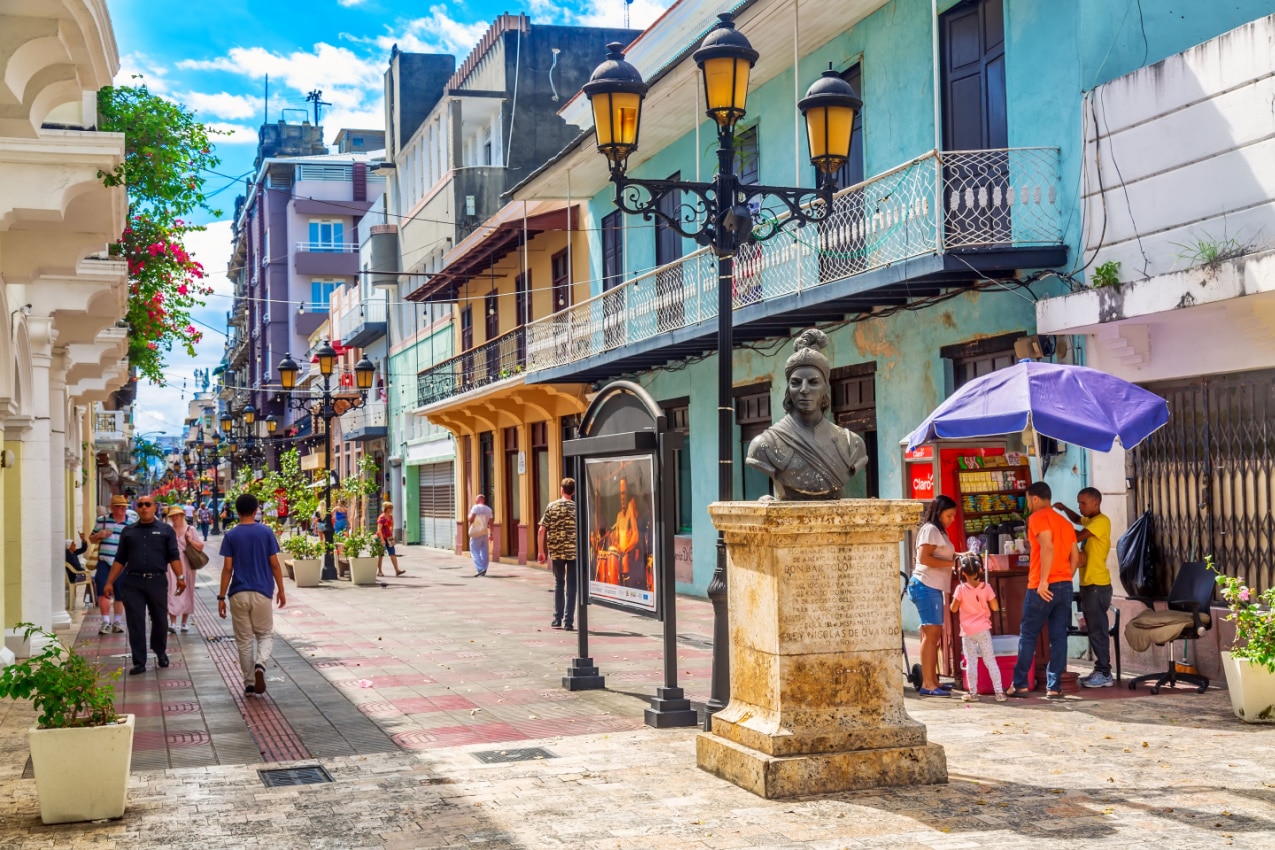
You can travel solo in the Dominican Republic if you’re well-informed and respect all the safety measures. That being said, it’s always better to travel with a group. Solo female travelers are particularly susceptible to all kinds of crime, particularly harassment and assault.
Is It Safe to Travel to the Dominican Republic as a Family?
Although it’s not the safest destination in the world, you and your family can visit the Dominican Republic as long as you are careful. This means that you should stay away from public buses, dangerous neighborhoods, and forlorn areas in the cities, and avoid going out at night. Sticking to some common sense tips can keep your mind at ease.
Perils of Nature: The Risk of Natural Disasters in the Dominican Republic
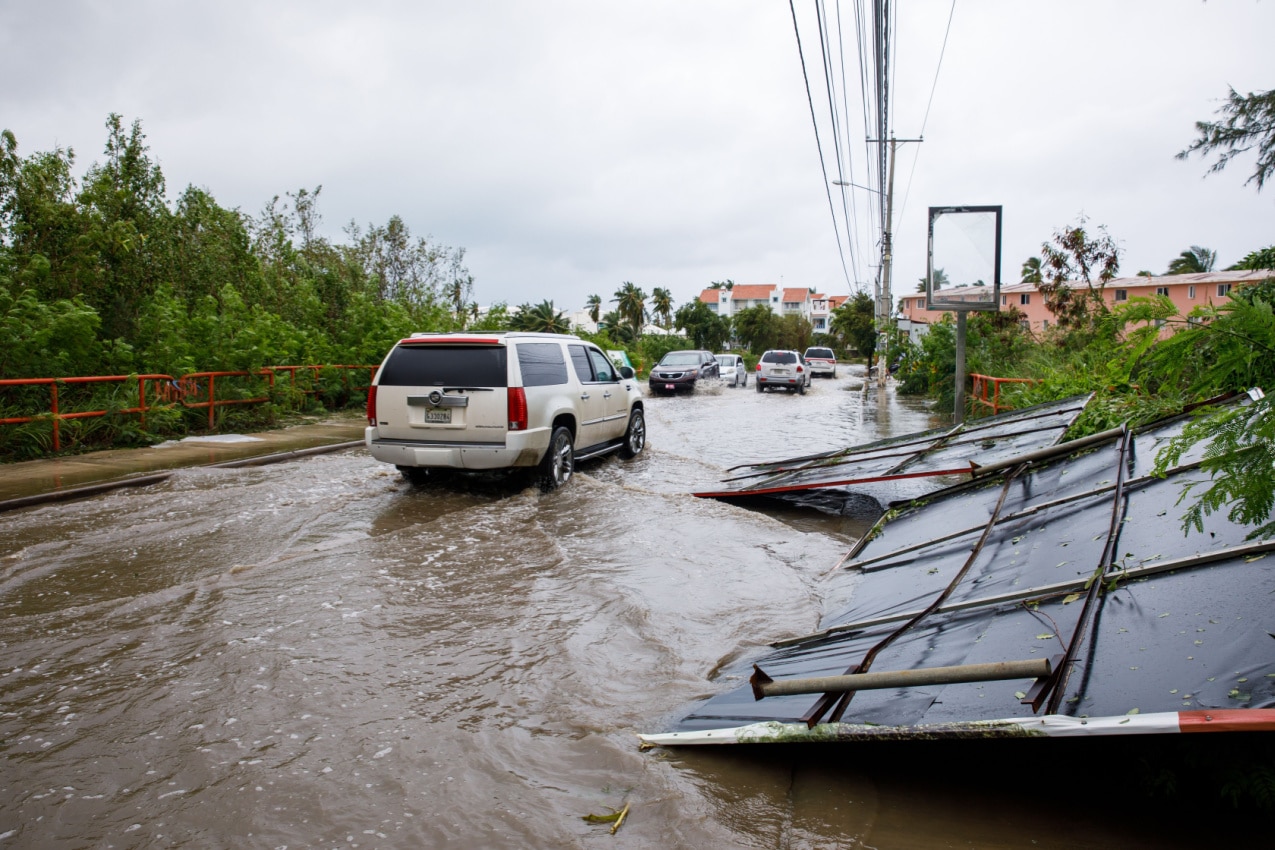
According to the Australian travel advisory, the Dominican Republic is subject to natural disasters and severe weather, such as:
- Hurricanes
- Landslides and mudslides
- Flooding
- Earthquakes
- Tsunamis
All of these can cause disruptions in the everyday lives of the local citizens as well as tourists’ vacations. More serious natural events can even disrupt essential services — such as water and electricity — or clog up the roads.
You have to stay cautious and prepared at all times, especially during the wet season, between May and November, when frequent rains are sure to cause landslides, mudslides, and flooding around the country.
Hurricane Information and Precautions
According to the US travel advisory, the Dominican Republic is hurricane-prone. The hurricane season begins in June and has its peak from mid-August to late October.
The coastal regions are at the highest risk of hurricanes.
On average, the Dominican Republic’s sphere of influence gets affected by at least six hurricanes annually, but only half of them directly hit the country itself.
The last hurricane to reach the country was “Franklin” on August 24, 2023. While it was cruising on the open ocean, it was classified as a category-4 hurricane, but upon reaching the island, it lost its strength and resulted in a slightly more severe tropical storm.
The US travel advisory offers a comprehensive set of tips in case a hurricane hits the country:
- Maintain a stock of boiled or bottled water
- Store non-perishable food items
- Acquire a battery-powered radio
- Keep your vital documents (like your passport) safe and close to you
- Obtain travel insurance – it’ll certainly come in handy in the case of natural disasters
- Monitor all the local media, including the local radio and news reports
Also, it’s a good idea to follow the local and international sites that monitor hurricanes to stay up-to-date on the weather:
- Dominican National Office of Meteorology
- Dominican Emergency Operations Center
- National Hurricane Center
- Weather Channel
- Weather Underground
- Atlantic Tropical Weather Center
Earthquake and Tsunami Information and Precautions
According to the Australian travel advisory, the Dominican Republic is indeed in an earthquake-prone zone. This means that earthquakes could occur and cause destructive tsunamis. Some sources classify the earthquake hazard in the Dominican as “medium.” That means that there’s a 10% chance of a major earthquake hitting the country in the next 50 years.
On November 8, 2023, a 5.0-magnitude earthquake affected the northwestern region of the country, near the border with Haiti. It was the strongest earthquake to hit the country that year. Fortunately, it didn’t cause any serious damage – except for two schools – or injure any people.
The UK travel advisory offers a pretty thorough procedure in case an earthquake occurs during your visit:
- Drop to the ground and take cover. Remain in this position until the tremors and the shaking stop.
- Don’t leave your position until it’s deemed completely safe.
- Stay away from street lights, buildings, and electric wires outside. Basically, avoid anything that can fall on you.
- Following the earthquake, don’t run and walk carefully. There may be aftershocks and debris.
- If you get trapped, tap on a wall or a pipe, so that rescuers can hear you.
As you probably know, stronger earthquakes may directly cause tsunamis. For example, in 1946, an 8.1-magnitude earthquake struck the northern parts of the island and produced a very strong tsunami that resulted in over 1,000 fatalities.
Luckily, tsunamis are rare in the Dominican Republic and don’t accompany each earthquake. According to WorldData, there have only been 6 tidal waves that can be classified as tsunamis since 1751 – less than in other tsunami-prone areas.
Beware the Silent Threat: Carbon Monoxide Poisoning in Dominican Republic
The Dominican Republic is one of those rare countries where you should be wary of carbon monoxide poisoning.
According to the Washington Examiner, between 2016 and 2019, 14 people vacationing in the Dominican Republic were fatally poisoned by carbon monoxide.
It’s hard to get a figure of the total incidents resulting only from carbon monoxide poisoning. For example, a Louisiana woman lost her life in 2019: it was suspected to be carbon monoxide poisoning, but pesticide poisoning or even Legionnaire’s disease were not ruled out either.
Carbon monoxide is hard to notice since the gas is tasteless, odorless, and invisible. Longer exposure may lead to serious problems like paralysis and losing your life.
For peace of mind while staying in the Dominican Republic, your best bet is to buy a portable CO detector, which costs only around $20.
Dominican Republic Weather Patterns: What to Expect
The Dominican Republic has a tropical climate, and it’s mostly warm throughout the whole year. The period between May and October is wetter and hotter, while December to January is cooler and dryer. November and April are usually considered in-between months.
Monthly Average Temperatures and Rainy Days in Santo Domingo, Dominican Republic
| Month | Temperature (High and Low) | Rainy Days |
| January | 67° / 86°F (19 / 30°C) | 8 days |
| February | 67° / 86°F (19 / 30°C) | 6 days |
| March | 68° / 87°F (20 / 31°C) | 6 days |
| April | 70° / 88°F (21 / 31°C) | 7 days |
| May | 72° / 89°F (22 / 32°C) | 7 days |
| June | 73° / 90°F (23 / 32°C) | 10 days |
| July | 73° / 91°F (23 / 32°C) | 11 days |
| August | 74° / 91°F (23 / 33°C) | 12 days |
| September | 74° / 91°F (23 / 33°C) | 12 days |
| October | 73° / 89°F (23 / 32°C) | 13 days |
| November | 71° / 88°F (21 / 31°C) | 9 days |
| December | 71° / 87°F (20 / 30°C) | 9 days |
Spring
Spring’s weather is sunny and dry. It’s one of the best periods to visit this country. The average temperatures never go below 68°F and higher than 89°F. Plus, there are very few rainy days per month.
Spring is the perfect time to visit the beautiful beaches of the Dominican Republic, such as Punta Cana, Bavaro, and Playa Dorada, but also to experience the excitement of the carnival in March, or the Santo Domingo de Fiesta and the Espiritu Santo Festival in May.
Summer
The beginning of summer signals the wet season in the Dominican Republic. The number of rainy days per month increases, and so do the temperatures, with a maximum daily temperature of 91°F. The weather can get stuffy and really hot, which is especially unpleasant for some.
And yet, the summer season is an undiscovered gem for many visitors who are looking for a budget trip to the island. Although the risk of a hurricane hitting the island is higher starting with August, the island is still perfectly safe during June and July.
Fall
With the coming of fall, the wet season reaches its peak. The temperatures are very high, and the number of rainy days per month is the highest in October (13 rainy days). The island is mostly tourist-free since it’s also the peak of the hurricane season.
That being said, it’s definitely the cheapest month to visit the Dominican Republic and the best time if you want to get to know the rites and customs of the local population. In September, you can experience the fantastic processions of la Dia de las Mercedes festival and the rural traditions of the Feria Ganadera El Cupey.
Winter
The tourist season begins in December. Beaches, resorts, and hotels start to fill up, and with the arrival of visitors, the prices start to rise. The temperatures start to drop after sunset, reaching 71°F, while the days are sunny, dry, and warm.
January is all about New Year celebrations, and the crowded islands brim with excitement and activity. February, on the other hand, is the official beginning of the carnival season, which attracts even more tourists.
Public Transportation Safety in Dominican Republic
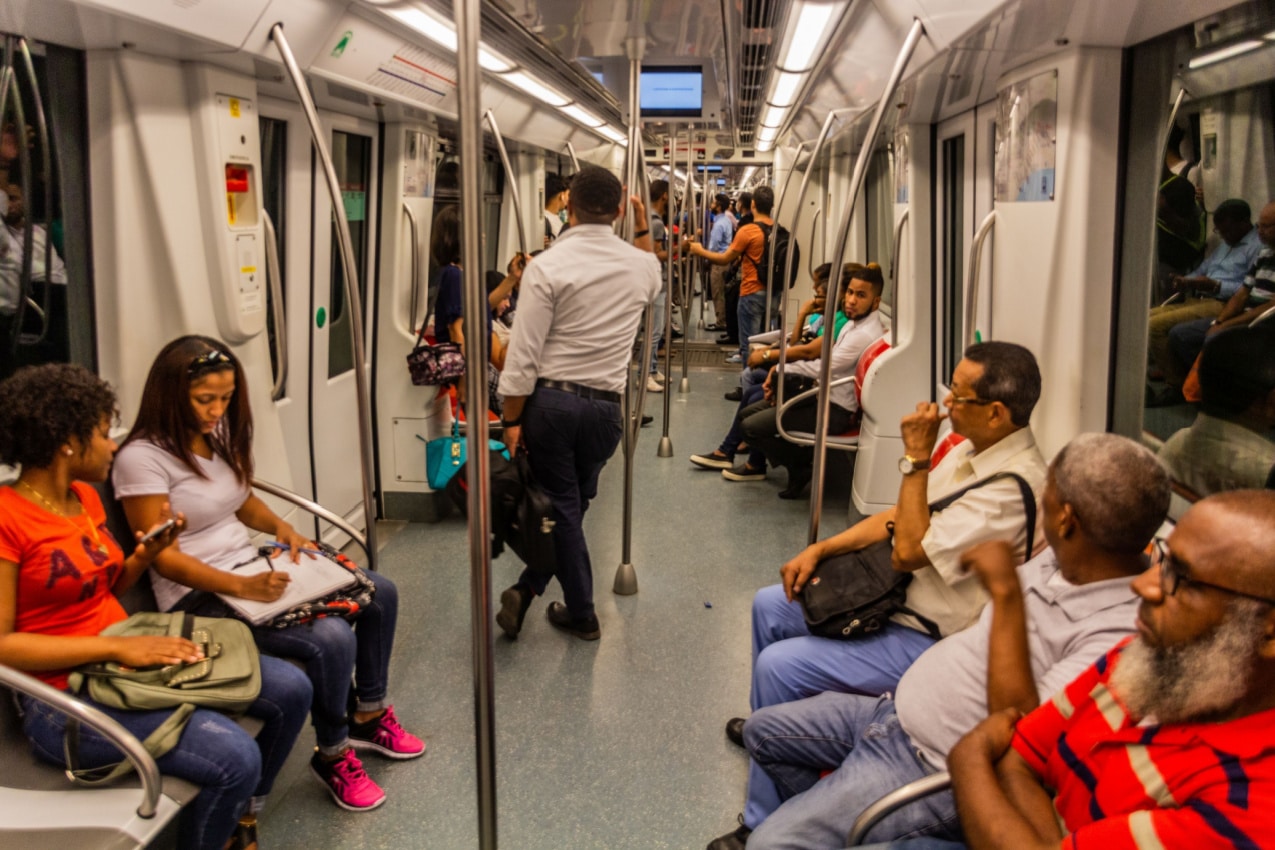
The public transport in the Dominican Republic is not safe. However, certified taxis are both reliable and safe. In terms of renting a car, keep in mind that there’s a high frequency of road accidents in the country.
According to the UK travel advisory:
- There are plenty of transport options available, like the expanded metro network in the country’s capital.
- Stay away from public buses and “carros publicos” (which are shared cars, driving along semi-fixed routes), as they’re neither safe nor secure.
- Private bus companies are completely safe, but they only provide intercity (between cities) bus services.
Public and Private Buses
The Canadian travel advisory advises against getting on public buses and gua-guas – microbuses. The latter often don’t even have doors, an additional safety concern.
Gua-guas are tiny, privately-owned buses that offer their services for either inner-city travel, or for longer destinations around the country. They are notoriously unsafe and unreliable.
Private buses, on the other hand, are quite safe and reliable. Unfortunately, they are only available for intercity travel.
Taxi Services
If you follow some simple safety tips, you’ll find that taxis are relatively safe thanks to the well-regulated taxi syndicate of the Dominican Republic.
However, make sure to only use official, marked taxis. Most of these are either beige or brown, but not always. There are over 20 official taxi companies in the country, and only official taxis can be called via telephone or a mobile app. The most famous companies are Apolo Taxi and Aero Taxi.
On the other hand, avoid using unofficial taxis at all costs. According to the Australian travel advisory, many travelers have been assaulted or robbed in unregistered taxis.
They also advise visitors not to use route taxis, better known in the Dominican Republic as carros publicos, since there’s a high chance of getting robbed. You can immediately spot carros publicos since they have no taxi markings, unlike the official taxis.
Additionally, avoid renting motorcycle taxis (motoconchos), as motor vehicle accidents are statistically more fatal than car accidents.
Lastly, keep in mind that taxis in the country are unmetered, which means that you should always negotiate the price before departure.
Renting a Car and Quality of the Roads
Finally, if you’re considering renting a car, keep in mind that the Dominican Republic has one of the highest road accident rates in the whole world. Drivers often drive while drunk and rarely respect traffic rules – including driving on the wrong side of the road! To top it all off, most vehicles are in bad condition.
According to the Canadian travel advisory, while most tourist hotspots have decent roads, less popular and less populated areas have roads of extremely poor quality.
The Quality of Medical Care in Dominican Republic
The quality of medical care in the Dominican Republic is decent in the larger cities but lacking in forlorn and rural areas. Also, private hospitals are generally better equipped and better-staffed than public medical establishments.
The Canadian travel advisory points out that private hospitals tend to overcharge for medical services. Prices might also be unstable and variable. Additionally, doctors may get a bit aggressive and pushy in their sales tactics, i.e., trying to sell you on their facility.
The best hospitals in the country, as previously stated, are located in larger cities, like Santo Domingo and its wider metropolitan area, as well as Puerto Plata. There are good hospitals in some of the smaller cities, too. Here’s a short list:
- Centro Médico UCE – Santo Domingo
- Hospital General de la Plaza de la Salud – Santo Domingo
- Hospiten Santo Domingo – Santo Domingo
- Hospital General Vinicio Calventi – Santo Domingo
- Centro Médico Bournigal – Puerto Plata
- Centro Médico Punta Cana – Punta Cana
- Hospital General de la Plaza de la Salud – Higüey
- Centro Médico Corominas – San Francisco de Macorís
- Centro Médico Cibao – Santiago
- Hospital Metropolitano de Santiago (HOMS) – Santiago
Dominican Republic, Here We Come!
You can have a great time visiting the Dominican Republic – provided that you keep your eyes open and exercise increased caution.
In short, don’t trust strangers, dating apps, public transportation, and unofficial taxis; don’t venture into dangerous or isolated areas; stay up-to-date on the weather forecast and follow safety protocols in case of natural disasters; be careful on the roads; don’t resist in case of theft; and finally, do bring a portable CO detector along with you. In case something unfortunate happens, you can rely on the police to help you out.
Basically, stick to the maxim “better safe than sorry,” and you’ll have a great trip in the Dominican Republic.
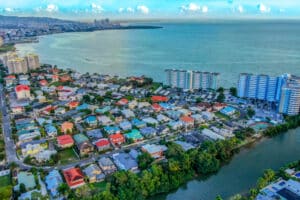
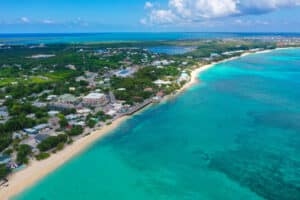
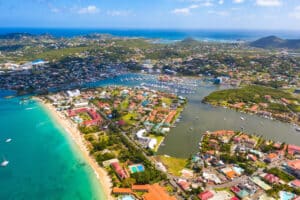
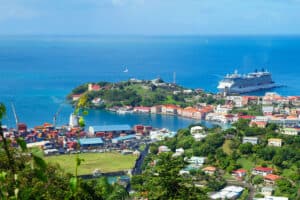
I moved to Punta Cana more than 7 years ago and have never felt unsafe. I have many expat friends that take public transportation buses all the time. And many use Uber we are out late several nights a week and have never had a problem. I feel safer here then I felt in the downtown of my Ontario city.
Hi Christine, thank you for reading and appreciate your first-hand feedback on the area!
Curious, I looked at Numbeo for my city, Washington, DC. It comes in at 70.86 So the DR and DC are on par. So treat the DR like any large US city. Be aware of your surroundings. No earbuds. Walk in groups.
Thank you for reading, Linette, and for your feedback.